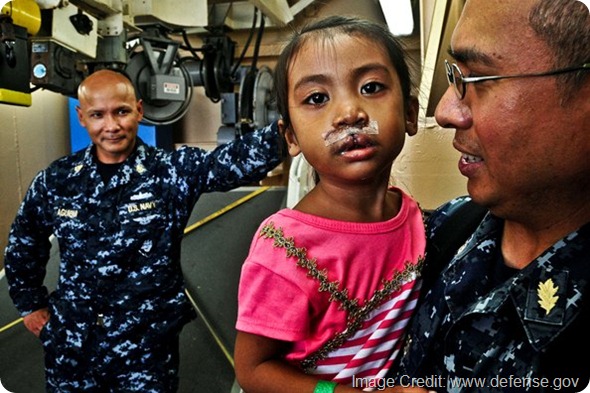What is cleft lip and palate?
Normally as the baby develops in the womb, the tissues that eventually form the upper lip and palate grow from both sides and fuse or join in the middle to give the final continuity and shape to the upper lip and the palate (roof of the mouth). This fusion takes place within the fourth and the eleventh weeks of pregnancy.
For babies with a cleft lip and/or cleft palate, this fusion did not occur completely leaving a gap or a cleft in the upper lip under the nostrils and/and within the mouth at the roof of the mouth cavity. (1-6)
How many people does cleft lip and palate affect?
Nearly 1 out of every 700 babies in the United States and United Kingdom is born with a cleft in the upper lip or palate.

Symptoms of cleft lip and palate
The cleft may be present on either side forming an opening under both nostrils or may be present on a single side. If both sides are affected, it is termed bilateral and if a single side is affected, it is called unilateral cleft lip and or palate.
In mild cases there is just a notch in the upper lip while in severe cases there is a large opening from the lip through the nose and this causes the nose to appear shorter, distorted and broader.
The cleft in the lip may be complete or incomplete. In complete cases the entire lip and the part of the jaw bone that holds the upper teeth is affected and in incomplete cases only the upper lip is affected.
Cleft palates can extend from the front of the mouth (hard palate or the hard part of the roof of the mouth) to the throat (soft palate or the softer roof of the mouth at the back of the mouth). (1-2)
Who does cleft lip and palate affect?
Cleft lip and/or cleft palate are most commonly seen in people of Asian descent and some American Indians and further boys are more often affected than girls. They occur less frequently among African Americans.
Cleft lip and palate is the commonest type of birth defect affecting the face. More than 70 percent of babies with cleft lip also have cleft palate.
Causes of cleft lip and palate
The reason for this incomplete union of tissues of the upper lip and the palate is not known clearly in most babies.
Sometimes it may be an inherited condition where some families have more than one baby suffering from this condition at birth. There seems to be a genetic connection between causation of this condition in these cases.
In some babies the condition may be one of its kind in the whole family. Some babies with cleft lip and/or palate may also have other birth defects accompanying the condition. In fact 13 to30 percent of babies with clefts have additional birth defects.
Thus, after a baby is born with a cleft lip and/or palate, the paediatrician or the child’s specialist doctor performs a thorough examination to identify any other birth defects which may be present.
Correcting cleft lip and palate
Cleft lip and palate needs to be corrected as they may be associated with other problems like those of hearing, repeated ear infections, difficulty in speech development as both lips and palate is important for speech, feeding and growth difficulties and difficulty and problems with teeth eruption. (4)
Cleft lip and cleft palate is most commonly treated with cosmetic surgical correction. Sometimes a child with a deeper cleft may need surgery in stages to correct the defect completely. The surgical corrections are planned at appropriate ages and sizes.
Sources
- http://www.in.gov/isdh/files/cleft_lip_palate.pdf
- www.gillettechildrens.org/fileupload/cleft%20lip%20and%20palate.pdf
- http://www.nlm.nih.gov/medlineplus/cleftlipandpalate.html
- http://www.rch.org.au/kidsinfo/factsheets.cfm?doc_id=7759
- www.cdph.ca.gov/…/MO-CBDMP-Cleft-Lip-Cleft-Palate-Facts.pdf
- www.nhs.uk/conditions/Cleft-lip-and-palate/Pages/Introduction.aspx
Further Reading
- All Cleft Palate Content
- Causes of cleft lip and palate
- Symptoms and diagnosis of cleft lip and palate
- Treatment of cleft lip and palate
- Prevention of cleft lip and palate
Last Updated: Jun 5, 2019

Written by
Dr. Ananya Mandal
Dr. Ananya Mandal is a doctor by profession, lecturer by vocation and a medical writer by passion. She specialized in Clinical Pharmacology after her bachelor's (MBBS). For her, health communication is not just writing complicated reviews for professionals but making medical knowledge understandable and available to the general public as well.
Source: Read Full Article



